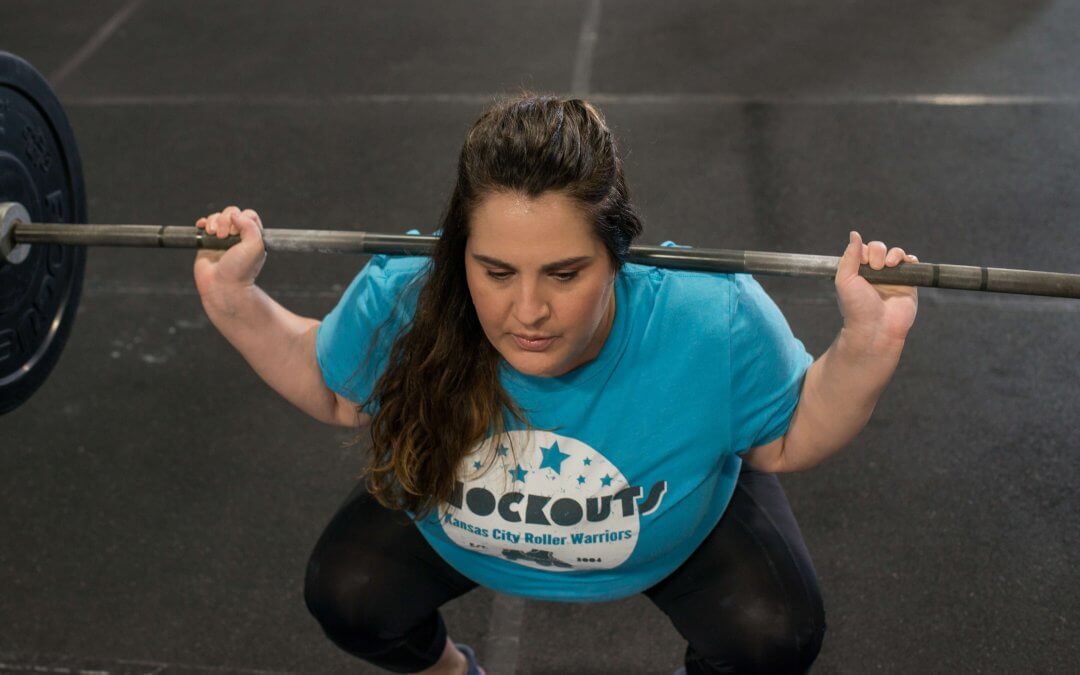Squatting is dangerous? Squatting to full depth will only get you hurt? I can’t squat the right way… Every time I squat I have pain… How can we come to such brash conclusions when the truth is… we squat everyday!
Everyday we get in and out of a chair, in and out of the car, the toilet, and all these different things. So to say that squatting is dangerous or will cause injury is a big LIE. What is true, however, is that we need to have adequate strength and mobility in the squat to do it correctly.
Squatting Requires Mobility
When you’re talking about the squat, there’s a couple of different areas to address. First, you have to make sure that you’re mobile in the hips, knees and ankles to squat safely and properly.
Ankle Mobility Test
What we want to see with the ankle is that when you go to squat, the knee can track over the toes. If you try to squat and your knee does not go forward over the toes or your shins stay more vertical then you’re going to have issues with squatting.
Knee Mobility Test
Secondly, the knees need to be able to fully bend without pain. To test this, go to a double kneeling position with big toes together and try to sit back on your heels. If you can get your butt to touch your heels without pain in the knees, you passed.
One more drill to look at the knees is the prone heel to butt test. You will need to have a coach or someone there to help you do this. You’re going to lay on your stomach and have someone try to bring your heel towards your butt until it touches. If you can successfully get your heel to your butt and do it without pain, you passed.
Hip Mobility Test
Lastly, we are going to look at the hips. Once again, you have someone help you do this. Start by laying on your back and have someone bring your thigh all the way up to your ribs. The goal is to make contact with the rib cage.
If you have those three things, then you can start to squat. Okay. If you don’t have those things, you need to address mobility issues first. Otherwise, it’s gonna be a lot harder for you to squat.
Squat the Right Way
Keep in mind as we talk about that squat, that everyones squat will look slightly different, but the mechanics should all be the same. So, to begin, start with a basic body weight squat first before you start trying to do anything with weights. If you can’t squat with your own body weight, you don’t need to squat with weight.
How to Set Up For the Squat
When we are getting set up for the squat we need to look at the foot placement. So you want to have your feet roughly about shoulder-width apart and the toes angled outwards.
As we descend to the bottom of the squat, we want to make sure the knees are going the same direction as the toes. This is important so that we can keep the knees from collapsing inwards or going too far out.
If the knees go too far out, the foot will lose contact with the ground and make the squat much harder. Everyone’s squat is gonna look a little bit different, but these will allow you to squat the right way.
The Secret Behind a Powerful Squat
So once you have the general mechanics, there’s a couple little tips for the squat. That first one is gonna be your your feet. You want to think about your foot as a tripod. So when you’re squatting, you want to make sure that all three points of the foot are contacting the ground: heel and the inside and outside ball of the foot.
So when I go to squat down, if I let my weight shift forward, my weight is now coming off of my heels. If I let my knees fall in, I’m losing contact on the outside point. And if I’m pushing my knees out too much, I’m losing that inside point.
So when I start the squatting, I want the hips to go back in all three points of my foot to be in contact with the ground. So what I’m imagining is when I’m down in the bottom position, I imagine that my toes are grabbing the ground.
If my toes are grabbing and holding the ground, what happens is it creates a nice high arch. When this arch is high it now means my ankle is supported. When the ankle is supported the knees are supported. When the knee is supported then it can support the hip and the back.
If my arch collapses my knee falls in and then my hip kind of falls in. Now everything up the chain basically collapses because I don’t have a good arch and a solid base.
Mobility First – Mechanics Second
The big thing to remember is first, check on your mobility. We want to make sure we have full range of motion in the ankle, the knees and the hips.
If you have those, then you can move on to the next step and start practicing the squat. If you don’t have those, let me know so I can help you figure out how to fix those mobility issues.
If you’re brand new to squatting, start slow. You need to start with bodyweight squats first and then you can move on to you a dumbbell or kettlebell in the goblet position.
Once you feel like you mastered the goblet squat, move up to a barbell and keep climbing up in weight. Squatting is never dangerous if you do it the right way.
Never Stop Squatting
Everyone should be squatting and everyone should squat the right way. There should never be an age that you stop squatting even into your 70s and 80s, you should still be squatting. So hopefully this helps. And if you have any questions, let me know.

